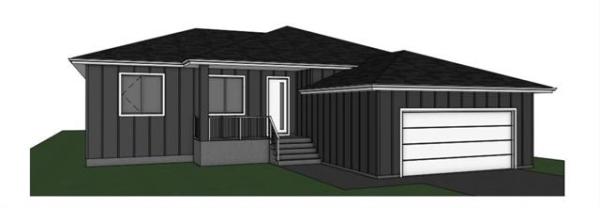DEAR Leanne: What are the best window coverings for reducing allergens in my home? We have removed the carpets and replaced them with hardwood and stone tile, but are not sure about the drapes. I know there are different types of blinds. Are some easier to clean? Our biggest concern is allergens.
ANSWER: Industries across the globe have taken up the challenge to be greener in all aspects of product development. This means not only do you and I get the benefits in our immediate environment, but these new products are also being created from a greener world perspective.
For your design question, you have an immediate need to cover your windows to reduce heat transfer in colder times, protect your decor from intense ultraviolet rays in the summer, and the need for privacy.
Drapery fabric does offer advantages to your room, in that the fabric surface absorbs sound and reduces the echo effect associated with hard surfaces. There is also fabric's thermal factor, meaning it can help keep a room warmer in winter and cooler in summer. Of course, this varies with the type of fabrics and the drapery design.
Fabric draperies trap and release dust, pollen and other allergens. Weekly vacuuming reduces the threat to air purity, as does selecting fabrics that can be washed in water, as opposed to chemical cleaning. (Many professional cleaners now offer environmentally friendly cleaning options.)
Other window coverings that would be considered low-maintenance while reducing the allergens would be blinds or shutters made from wood, metal or vinyl. Soft blinds may be an option for you, as they are made from fabric that can be easily vacuumed; however, hard surfaces tend to be popular.
When dust or pollen lands on these surfaces, it's easily removed with a damp cloth, as there are no fibres to get embedded and trapped in. Several styles work with any decor. Natural grasses such as bamboo are popular for a casual or globally inspired space.
Simple mini-blinds are available in a huge array of colours and widths. From a maintenance perspective, the greater the surface area, the easier it is to clean. This means that a wider slat will take less time to dust than several narrow slats.
Shutters are another design option. They can be comfortable in an old English library, or opening out to a breathtaking ocean view.
When you make your selection, inquire about the stain and finish used.
For extremely sensitive individuals, not only are the dust, pollen and dander a concern, but also the gases products emit. For instance, hardwood floors have an easy-to-clean surface, but some people are highly sensitive to the smell emitted from the varnishes used. Although the product is dry to the touch, the surface gives off VOCs (volatile organic compounds) for months after installation.
Fortunately, new federal regulations have been imposed due to public demand for low-VOC paints and finishes. We still have a way to go.
If you have the option of finishing natural wood yourself, check the following leading companies for eco-friendly finishes:
Natural paints:
Real Milk Paint Co. (28 shades) www.realmilkpaint.com
Old Fashioned Milk Paint Co. (20 shades) www.milkpaint.com
TimberSoy (12 shades) www.timbersoy.com
Low-VOC paints:
Benjamin Moore Aura (144 shades), Natura Zero-VOC (four shades) www.benjaminmoore.com
Cloverdale-Horizon (50 shades) www.cloverdalepaint.com
Sherwin Williams-Duration Home Harmony (50 shades) www.sherwin-williams.com
Sico -- Cashmere, Chamois and Shantung (four shades) www.sico.com
C2 Paint -- LoVo (300 shades) www.c2paint.com
-- Canwest News Service
Leanne Brownoff is an Edmonton interior design consultant who welcomes your questions at www.leannebrownoff.com. Answers will be featured in her column, as high volumes prevent individual email responses.



